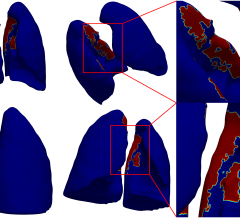
April 16, 2015 — Healthcare organizations are embracing patient engagement through strategies and investments centered on patient portals, according to a new study by HIMSS Analytics, a global research and analytics firm. However, healthcare leaders question whether their current trajectory will lead to the increased patient involvement required to improve clinical outcomes and reduce costs, the survey found.
HIMSS Analytics conducted a study on the state of patient engagement commitment and investment at healthcare organizations across the United States. The research consisted of an online quantitative survey of executives from 114 healthcare organizations and a qualitative focus group that involved nine of these leaders. An executive summary of the study was presented at HIMSS 2015, April 13-15 in Chicago.
HIMSS Analytics defines patient engagement as “an organization’s strategy to get patients involved in actively and knowledgeably managing their own health and wellness and that of family members and others for whom they have responsibility. This includes reviewing and managing care records, learning about conditions, adopting healthy behaviors, making informed healthcare purchases and interacting with care providers as a partner.”
The study, sponsored by InterSystems, found that the top drivers for patient engagement are to enhance and improve the health of the community (77 percent), the quest to build brand loyalty for patients (77 percent) and meeting meaningful use requirements (60 percent). However, these strategies might not be “fully baked,” according to the focus group participants. Indeed, some participants questioned their patient engagement plans.
“We don’t really have a true patient engagement strategy, just a portal project,” said one executive. Another chimed in to say, “We say we have a patient engagement strategy, but it is really just part of other strategies – wellness, health improvement, population health.”
Such comments are a cause for concern, according to Joe DeSantis, vice president of HealthShare Platforms, InterSystems, who pointed out that while leaders say they have a strategy, they may be moving forward with only a tactical plan.
“Even if organizations have a vision for real patient engagement, many are consumed with checking the boxes for meaningful use,” DeSantis said. “Unfortunately, a patient portal based on a single EHR [electronic health record] is not enough to move patient engagement forward. Engagement needs to span the entire care continuum. The short-term focus on meaningful use has often been at the expense of long-term strategic goals.”
Patient engagement initiatives often lack definitive leadership. According to the survey, multi-departmental/multi-role committees are the most common owners of an organization’s patient engagement strategy (26 percent). Other owners of the strategy include the chief marketing officers (15 percent), followed by chief information officers (10 percent) and CEOs (8 percent).
These strategy owners might not have the financial wherewithal to effectively move initiatives forward. The roadblock: Spending on patient engagement is spread across organizations – with information technology (IT) typically buying the tools, ambulatory departments paying for the costs for program administration, and marketing shelling out the money for promotions to position patient engagement as a brand loyalty strategy.
“I am coming to the conclusion that maybe we don’t actually have an organizational strategy around patient engagement if we have not set up a budget that owns all aspects of it,” said one of the surveyed executives.
Even in the absence of a cohesive financial strategy, IT departments are turning to patient portals as their go-to tool for patient engagement. Their reasons for adopting portals are varied: 71 percent of respondents who have an engagement strategy are using portal technology to meet current minimum meaningful use requirements for functionality and data sharing from a single source; 54 percent are using portals that offer a combination of patient services, technology and content; and 51 percent are using portals as a configurable, interoperable information exchange platform with data sharing from multiple sources. Overall, about two-thirds of these respondents are using portals provided by their EHR vendors.
Not surprisingly, focus group participants expressed concerns about their portal solutions. “Most portals don’t really align well with the definition of patient engagement,” one leader said. “They are great for convenience, but they don’t actually help people manage chronic diseases, improve their health or give them resources they need to move toward healthier behaviors. Most of the tools out there just don’t deliver on that promise.”
To fully engage patients, leaders are looking for next-generation portals to offer the functionality that will enable patients to become partners in their own care. More specifically, they are seeking functionality such as e-visits or e-consultations (80 percent), interoperability across multiple providers (70 percent), health evaluation and coaching (70 percent) and tele-visits (50 percent).
For more information: www.himssanalytics.org


 August 29, 2025
August 29, 2025 









